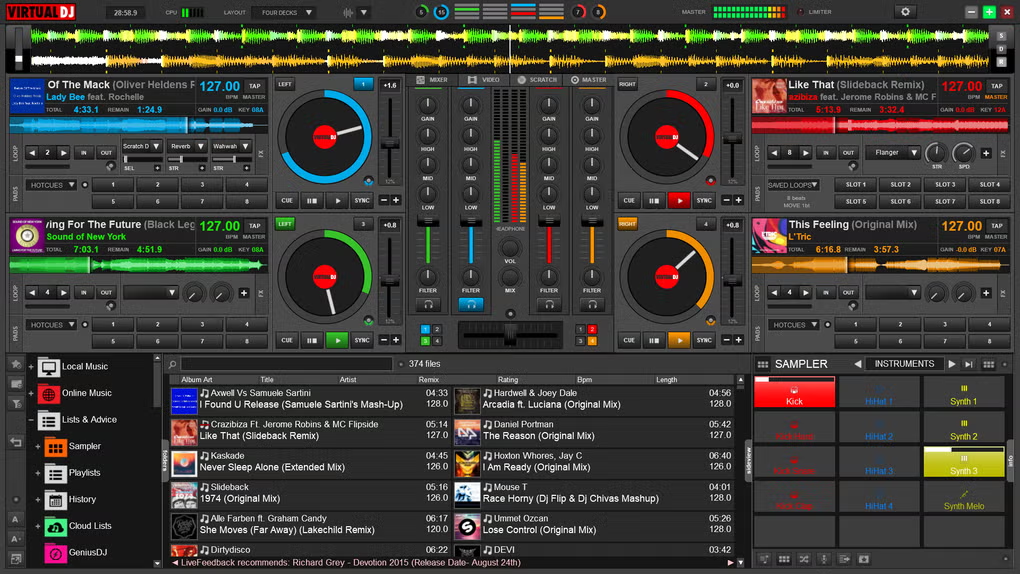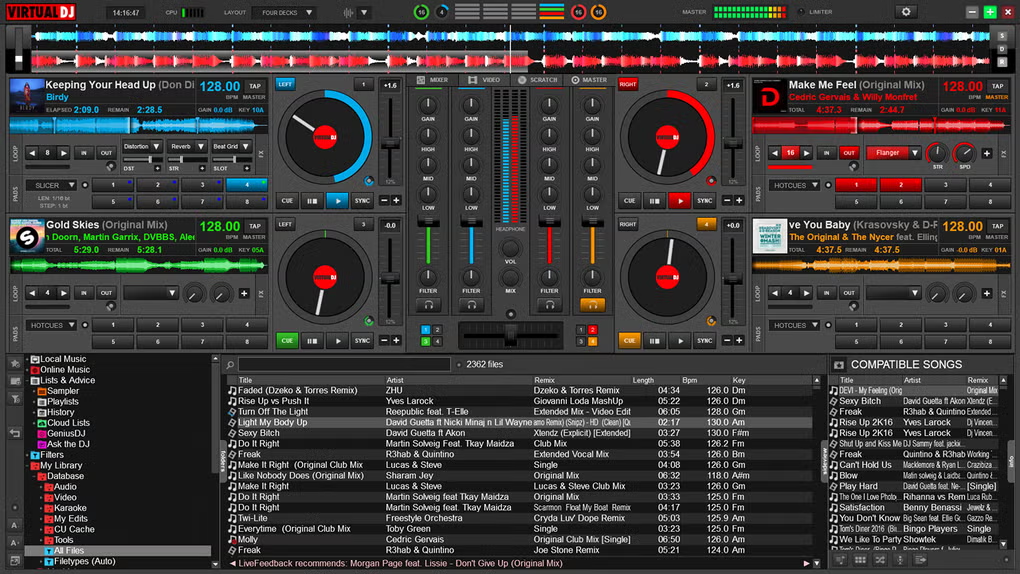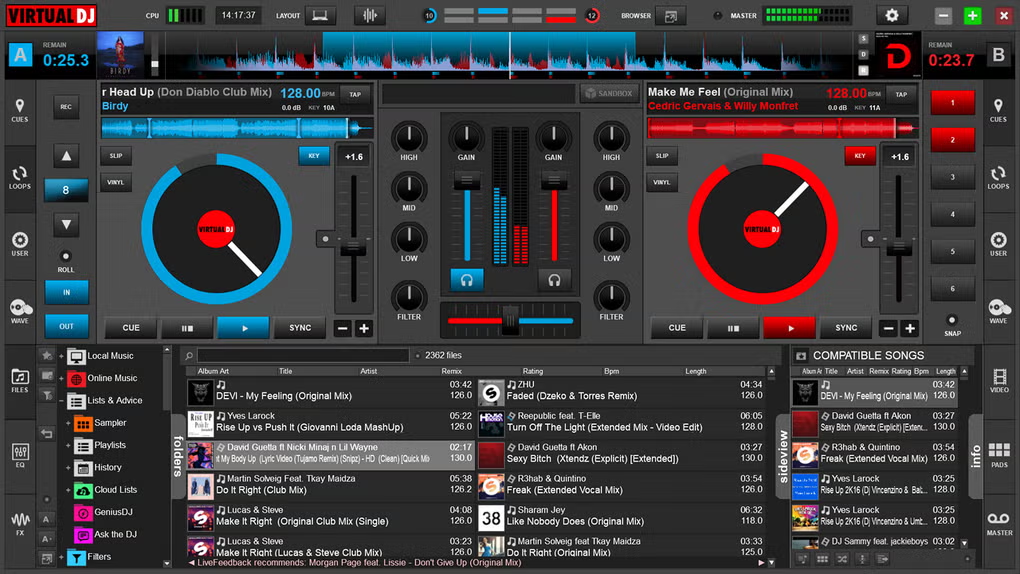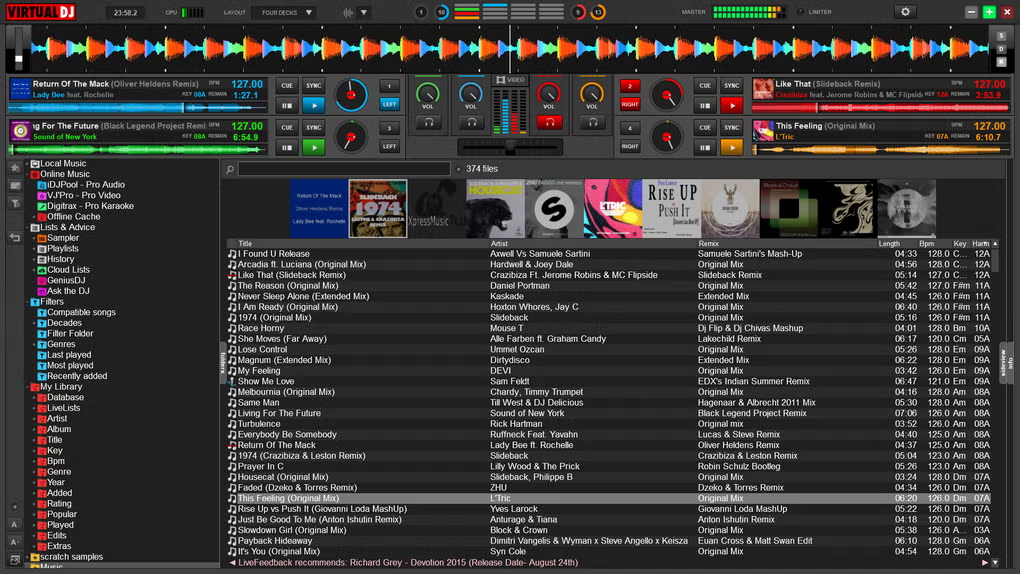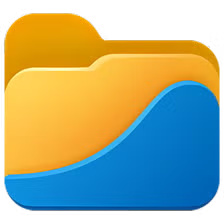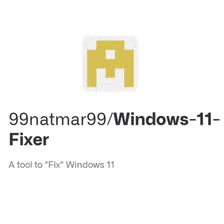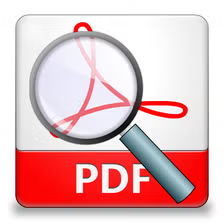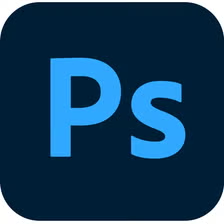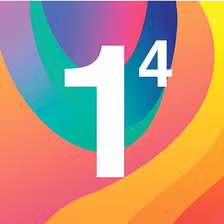VirtualDJ Review (2025): Still the King of DJ Software? Let’s Find Out.
Alright, let’s talk DJ software. If you’ve been spinning tracks for any length of time, or even just thinking about starting, you’ve definitely heard the name: VirtualDJ. It’s been around forever, it seems, constantly evolving, always adding features. It promises to replace your entire physical setup – turntables, CDJs, mixer, the whole shebang – with the power of your PC or Mac. Sounds good, right? But here in 2025, with tons of competition, is VirtualDJ still the top dog? Does it actually deliver the goods for everyone from bedroom beginners to main-stage pros?
I’ve spent countless hours behind digital decks, testing pretty much every piece of DJ software under the sun. So, let’s cut through the marketing fluff. We’re going to take a real, hard look at Atomix VirtualDJ – what it actually *does*, who it’s really *for*, and whether it deserves a spot on your laptop. Forget the vinyl crates for a minute; let’s dive deep into the world of digital DJing with VDJ.
What’s the Big Idea Behind VirtualDJ Anyway?
Think about the classic DJ setup: two turntables (or CD players) and a mixer in the middle. VirtualDJ basically takes that concept and puts it onto your computer screen. But it doesn’t just stop there. The whole point is to use your computer’s brain to do things that were way harder, or just plain impossible, back in the analog days. We’re talking perfect beat matching at the click of a button, mixing videos as easily as audio, accessing millions of tracks online instantly, and controlling everything with modern hardware.
It tries to be a chameleon, adapting to whoever’s using it. Got a fancy new controller? Plug it in. Still love the feel of vinyl? Hook up your turntables. Just starting with a laptop? It works for that too. This flexibility is a huge part of its appeal, but it also means there’s a *lot* going on under the hood. It aims to be powerful, compatible, innovative, and stable – a tall order for any piece of software, especially one dealing with real-time audio and video manipulation.
The Sync Button’s Secret Weapon: All About the BeatLock Engine
Okay, let’s address the elephant in the room for many old-school DJs: the sync button. And in VirtualDJ, the magic behind that sync button (and a lot more) is the famous BeatLock engine. Is it cheating? Is it a crutch? Honestly, it’s a tool. A very powerful one.
So, What Does BeatLock *Actually* Do?
Forget just matching BPMs. When you load a track, VirtualDJ goes to work like a tireless roadie analyzing the music. It figures out the tempo (BPM), the musical key, where the beats fall, and even the basic structure (like 4/4 timing and phrasing). BeatLock uses all this info to essentially glue your tracks together rhythmically.
- Keeps Tracks Locked Tight: Hit sync, and the engine actively works to keep the beats aligned. This isn’t just a one-time match; it helps maintain the sync even through small tempo fluctuations or when using loops and effects. Think of it as micro-adjustments happening constantly.
- Makes Looping Effortless: Want to loop that perfect 4-bar phrase? Just click. BeatLock ensures the loop starts and ends exactly on the beat, creating seamless repetitions. No more fumbling to get the timing right.
- Keeps Effects and Samples On-Grid: Trigger a delay effect or fire off a sample from the built-in sampler – BeatLock ensures they play perfectly in time with your main track. No more echo trails sounding like a train wreck.
- Smooths Out Your Fades: The automatic crossfading uses the beat information to blend tracks at rhythmically sensible points, making transitions sound more natural, less jarring.
Is BeatLock Just for Beginners?
Absolutely not. Yes, it’s a *fantastic* learning tool. It lets newcomers skip the initial frustration of manual beatmatching (which, let’s be real, can make people quit) and jump straight into learning about track selection, energy flow, and phrasing – arguably the more important parts of DJing. But pros use it too! Imagine juggling three or four decks, firing off samples, and managing effects – manually keeping everything perfectly in sync would be near impossible. BeatLock provides the stability needed for complex routines.
My take as the Guru: Learn to beatmatch by ear on VirtualDJ (you totally can, just turn off sync!). It’s a fundamental skill. But don’t be afraid to use BeatLock strategically. It’s a powerful feature of this DJ program that enables creativity. Use the tools you have!
Plus, the visual aids – the waveforms showing beats, the dynamic visualizer – they all work together to give you a clear picture of what’s happening musically. It helps you anticipate changes and mix more proactively.
It’s Not Just Ears, It’s Eyes Too: VirtualDJ’s Video Skills
Here’s where VirtualDJ really flexes its muscles beyond many competitors: it’s a seriously capable video mixing software package built right in. If you want to add visuals to your set, VDJ makes it surprisingly straightforward.
What Can You Do with Video?
- Mix Like Audio: Drag and drop video files (music videos, visual loops, movie clips – most common formats work) onto the decks and mix them using the crossfader, just like audio.
- Show It Off: Easily output your video mix to a second screen – connect a projector, TV, or club video wall.
- Effects Galore: Apply transitions (like fades, wipes, cubes) and real-time video effects (color changes, mirroring, strobes – loads of them, plus support for FreeFrame plugins) that can sync with the music’s beat.
- Branding & Interaction: Overlay logos, custom text (shoutouts!), or even a live feed from a camera pointing at the dancefloor.
- Karaoke King: This is huge for mobile DJs. VirtualDJ has excellent support for standard karaoke files (CDG+MP3 in ZIPs usually). It handles displaying lyrics on the external screen while you control the music – a complete karaoke software solution.
Being able to manage high-quality audio and video playback and mixing from one stable piece of software is a massive advantage for mobile entertainers, VJs, and even clubs wanting to elevate their visual game. No need for a separate laptop and complex sync setups.
Plugging In: How VirtualDJ Plays with Your Toys (Hardware)
Let’s talk gear. A DJ needs knobs, faders, and platters. Software alone often feels disconnected. Thankfully, VirtualDJ boasts perhaps the widest hardware compatibility of any major DJ software. Seriously, they try to work with *everything*.
Controllers, Controllers Everywhere (MIDI & HID)
Got a DJ controller? Chances are, VirtualDJ supports it. They claim native, plug-and-play support for over 300 controllers, meaning you just plug it in, and it works with a sensible default mapping.
- Out-of-the-Box Ready: For popular controllers from Pioneer DJ, Numark, Denon DJ, Reloop, Hercules, etc., you’re usually good to go instantly.
- Easy Remapping: Don’t like the default layout? The built-in mapping editor lets you easily change what each button or knob does.
- Deep Customization with VDJScript: This is for the power users. VDJScript is a scripting language that lets you create incredibly complex custom actions, macros (one button doing multiple things), and conditional logic for your controller. Want a button to activate slip mode *and* a loop *only* if the track is playing? VDJScript can probably do it.
- Community Mappings: If VDJ doesn’t have a native map, check their website – users share mappings for obscure or older gear all the time.
Still Love Vinyl? Timecode to the Rescue!
Yes, you absolutely can use your beloved turntables (or CDJs) with VirtualDJ. Using special **timecode vinyl** (records with an audio signal instead of music) or timecode CDs, connected through a DVS-compatible sound card or mixer, you get that authentic hands-on control over your digital music files.
- Feel the platter, scratch the record – it controls the MP3 on your laptop. The latency is generally very low with a decent setup.
- It integrates with the BeatLock engine, so your timecode scratches can even snap back in time if you want (though many turntablists prefer this off).
- It’s a fantastic way to blend the best of analog feel with digital convenience – no more carrying heavy record boxes!
Sounding Good: Audio Connections
Getting audio in and out correctly is vital. VirtualDJ handles it:
- Basic: Even a simple headphone splitter cable (one side for master, one for headphones) can work in a pinch.
- Better: Use a dedicated external multi-channel DJ sound card (like those from Native Instruments, Rane, or Focusrite) or a controller/mixer with one built-in. This gives you separate, higher-quality outputs for the main speakers and your headphones.
- Pro Performance: Full support for low-latency drivers like ASIO on Windows and CoreAudio on macOS is essential for responsive scratching and mixing.
This compatibility across the board means you’re not locked into one specific brand of hardware. You can mix and match gear, upgrade components, and know that VirtualDJ will likely keep up.
Guru Tip on Hardware: While VDJ works with almost anything, performance is best with gear it has tight native support for. Check their website for officially supported controllers and DVS interfaces for the smoothest experience, especially regarding low latency for scratching.
Unleashing Creativity: Effects, Samples, Loops & Tricks
Okay, you’ve got tracks synced, maybe some video running. Now it’s time to get creative. VirtualDJ is like a Swiss Army knife packed with performance tools.
- Effects Powerhouse: You get a huge suite of built-in audio effects – filters, flangers, delays, reverbs, beat-grid effects, vocal removers, backspins, brakes – the list goes on. They are mostly beat-aware, meaning they sync automatically.
- VST Plugin Support (PC Only): This is a big one for PC users. Load up your favorite third-party VST effect plugins directly within VirtualDJ to expand your sound palette infinitely. Sorry Mac users, this is a PC advantage for VDJ.
- Live Sampling: The integrated sampler has 12 slots. You can instantly record a loop from a playing deck, trigger pre-loaded sounds (like air horns or custom drops), and it all stays locked to the beat grid. Great for live remixing and adding energy.
- Intelligent Looping: Beyond simple manual loops, VDJ offers automatic, seamless looping that intelligently snaps to the beat grid. Easy to set loop lengths (1 beat, 4 beats, 16 beats, etc.) on the fly.
- Flexible Cue Points: Don’t just set one cue point. Set *infinite* hot cues per track. Mark your mix-in points, drops, vocal phrases, breakdown sections – whatever you need for quick jumps and triggering. They are saved automatically for each song.
- Scratch Capabilities: As mentioned, timecode offers the best feel, but the jog wheels on most controllers also provide decent scratch emulation, enhanced by the software’s algorithms.
- Harmonic Mixing Helpers: Besides showing the key, features like Master Tempo (adjust speed without changing pitch) and direct key shifting help you create smoother, more musically pleasing mixes by keeping keys compatible.
- Recording & Broadcasting: Want to record your set? Simple one-click recording to various formats (MP3, WAV). You can even directly broadcast your audio (and video!) feed to internet radio platforms or services like Mixcloud Live.
It’s this combination of tools that allows DJs using VirtualDJ to move beyond simple A-to-B mixing and truly perform, creating unique moments and remixes live.
Your Music Library: Tamed and Ready
Got thousands, or even tens of thousands, of tracks? Finding the right tune in the heat of the moment is critical. VirtualDJ provides solid library management tools:
- Fast Database: Scans and organizes large libraries quickly. Searching is typically instant. Reads standard ID3 tags for artist, title, genre, etc.
- Multiple Views: Browse as a simple list, or use the CoverFlow view for a more visual experience. Create virtual folders and smart filter folders (e.g., show all tracks between 120-125 BPM in the key of Am) that update automatically.
- SideList / Automix: A handy area to stash upcoming tracks or let VDJ automatically mix a pre-prepared playlist (it even tries to match styles for smoother auto-transitions).
- History Tracking: Easily see what you played recently, great for recalling that perfect mix or reporting tracklists.
- CloudLists & Online Goodies: Access online databases (like Netsearch for streaming millions of tracks, subscription needed), get live recommendations based on global DJ trends (MusicGroup), and even let GenuisDJ suggest tracks to fill your folders based on your style.
While maybe not as visually slick as some rivals’ libraries, VDJ’s library is functional, fast, and powerful, especially with the online integration features.
Real-World Use: Stability and The Learning Curve
Let’s talk reality. Features are nice, but does it crash mid-gig? Generally, VirtualDJ has a good reputation for stability. It’s been around a long time, and the developers seem focused on performance. Like any software, a powerful computer helps, but it’s known to be reasonably efficient. Keep your system clean, use supported hardware, and you should find it reliable for live performance.
Now, the learning curve. Is VirtualDJ easy? Yes and no. Getting basic mixing going, especially with sync, is very easy. The interface offers simplified views for beginners. But mastering *everything*? That takes time. The sheer volume of features, the customization options with skins and VDJScript, the advanced effects routing – there’s a lot to learn if you want to use its full potential. It scales well, though. You can stick to the basics or go incredibly deep.
The Final Mixdown: VirtualDJ Pros vs. Cons (2025)
Why DJs Love VirtualDJ
- Unmatched Versatility: Audio, video, karaoke – it handles it all. A true all-in-one DJ program.
- Hardware Freedom: Widest compatibility with controllers, timecode systems, mixers, soundcards. Less vendor lock-in.
- Helpful BeatLock Engine: Great for beginners learning sync, powerful for complex pro mixes.
- Creative Tools Galore: Deep effects engine (VSTs on PC!), excellent sampler, smart looping, unlimited cues.
- Customization King: Skins change the look, VDJScript changes the *behavior*. Tailor it to your exact needs.
- Solid Performance: Generally stable and doesn’t demand a supercomputer (though more power is always better).
- Smart Library Features: Good organization plus unique online discovery tools.
- Accessible Entry: Often free for home use, letting you learn without upfront cost.
Where It Might Frustrate
- Information Overload: The sheer number of features *can* be intimidating at first glance.
- Interface Appearance: While skinnable, the default look might feel a bit dated or busy to some users compared to sleeker rivals.
- The Sync Debate: Over-reliance on BeatLock *could* slow down the development of manual beatmatching skills if you’re not careful.
- Potential Costs: Pro licenses for commercial use, controller unlocks, or Netsearch subscriptions add up.
- VSTs are PC-Only: Mac users miss out on third-party VST effect integration.
So, Should *You* Use VirtualDJ in 2025? The Guru’s Verdict
After years of seeing DJ software come and go, VirtualDJ consistently impresses with its sheer determination to be the Swiss Army knife for DJs. It genuinely tries to cater to everyone, and largely succeeds. Its combination of accessibility for new DJs and deep, professional features is remarkable.
Is it the *only* choice? No. Some prefer the workflow of Serato, the ecosystem of Rekordbox, or the performance focus of Traktor. But if you value **maximum compatibility** with hardware, want the **option to mix video or host karaoke** seamlessly, appreciate a **powerful sync engine** (whether as a learner or a pro), and desire **deep customization**, then VirtualDJ is incredibly hard to ignore. It’s a mature, stable, and feature-packed platform.
Also See: MKVToolnix Download For Pc
Yes, you’ll need to spend some time learning your way around if you want to use everything it offers. But the beauty is, you don’t have to. Start simple, use the features you need, and know that the power is there when you’re ready to explore. For a huge number of DJs using PCs or Macs for their digital DJing needs, VirtualDJ isn’t just *a* choice, it’s arguably *the* most versatile and adaptable choice on the market today.
The Bottom Line: If you need one piece of DJ software that can handle almost any gig, connect to almost any gear, and grow with your skills from beginner to expert, VirtualDJ should be at the very top of your list. It’s a true workhorse and a creative powerhouse rolled into one.

